GARCH models: The way forward
GARCH Models in R

Kris Boudt
Professor of finance and econometrics
Inventors of GARCH models
Robert Engle

Tim Bollerslev

Notation (i)
- Input: Time series of returns
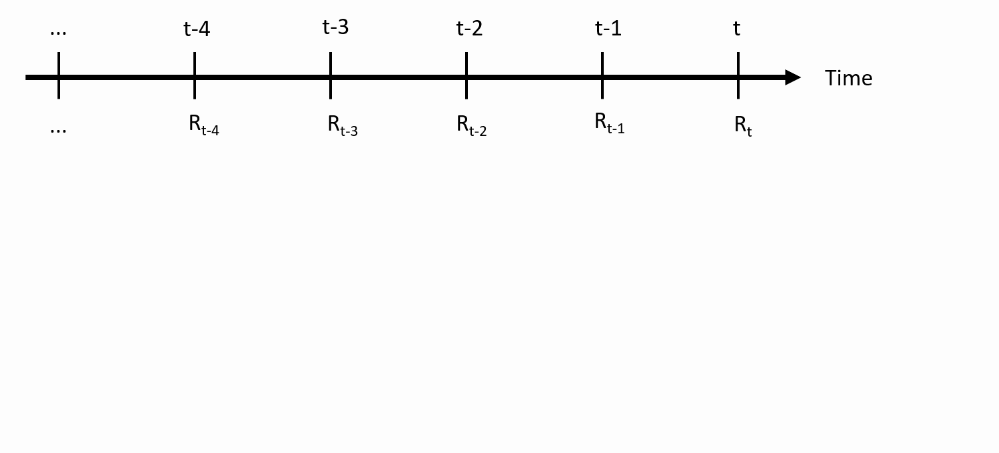
Notation (ii)
- At time $t-1$, you make the prediction about the the future return $R_t$, using the information set available at time $t-1$:
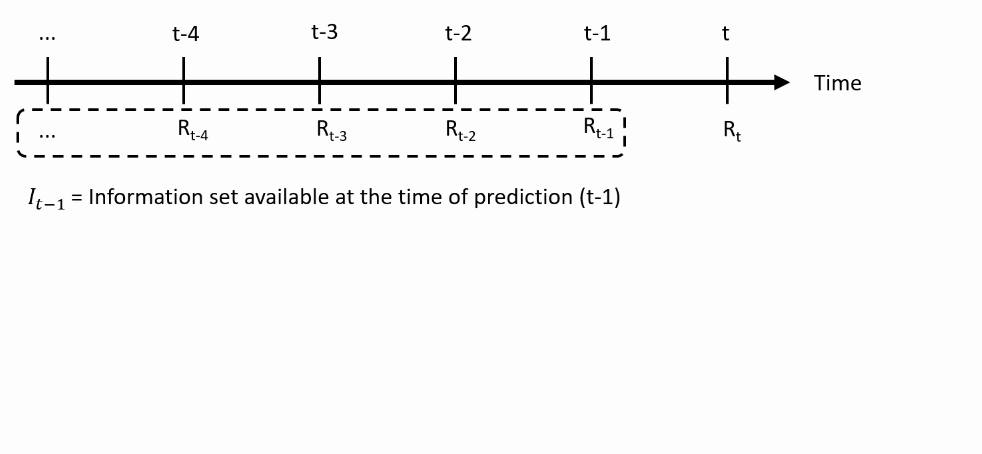
Notation (iii)
- Predicting the mean return: what is the best possible prediction of the actual return?
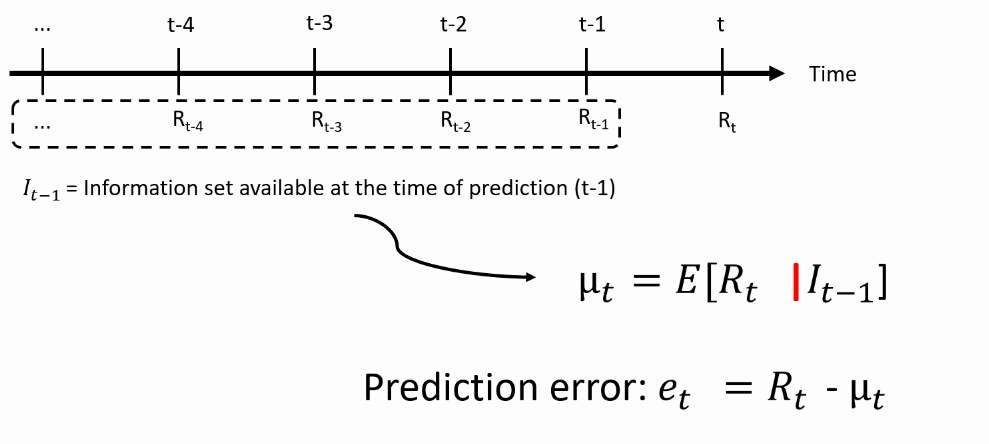
Notation (iv)
- We then predict the variance: how far off the return can be from its mean?
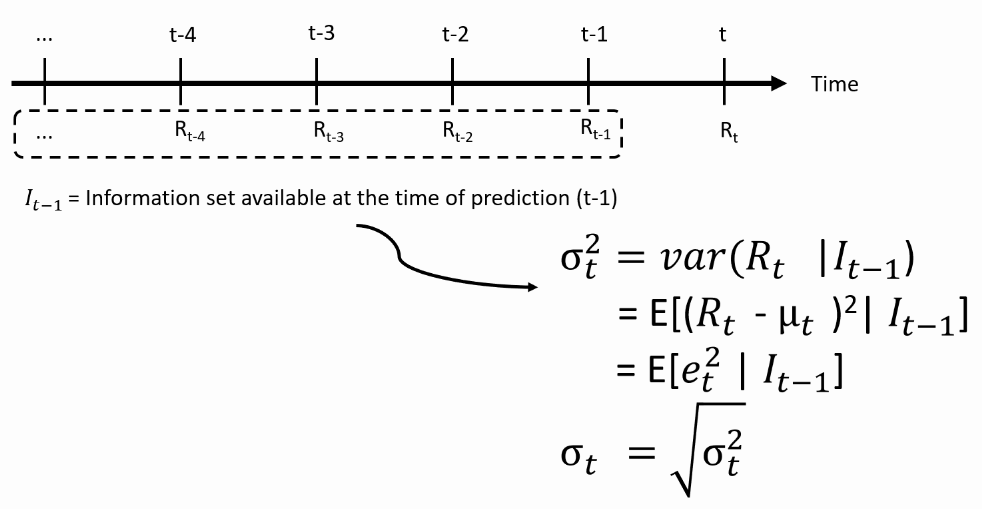
From theory to practice: Models for the mean
- We need an equation that maps the past returns into a prediction of the mean
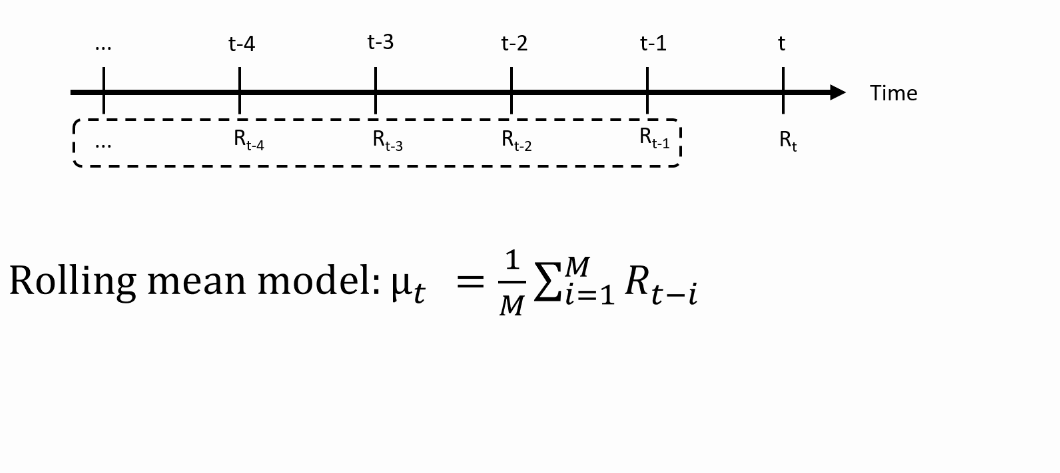
For AR(MA) models for the mean, see Datacamp course on time series analysis.
From theory to practice: Models for the variance
- We need an equation that maps the past returns into predictions of the variance
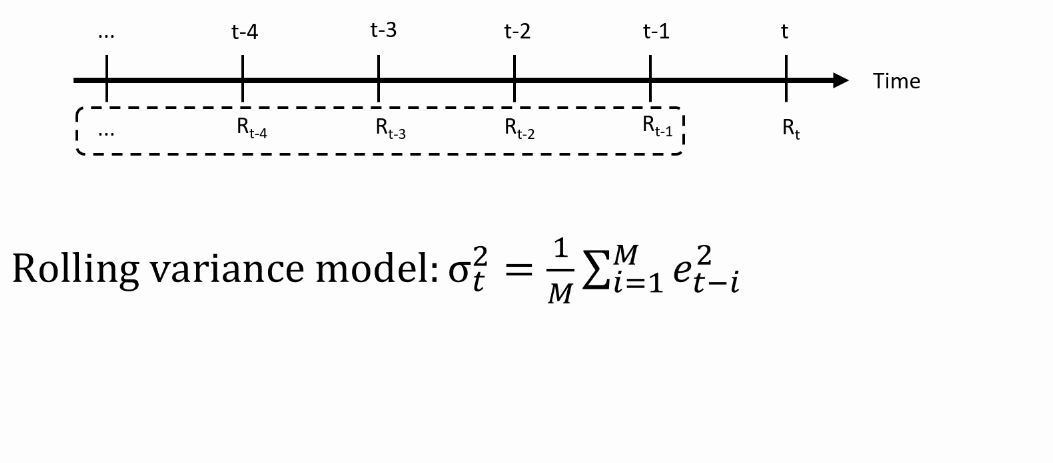
ARCH(p) model: Autoregressive Conditional Heteroscedasticity
- We need an equation that maps the past returns into predictions of the variance
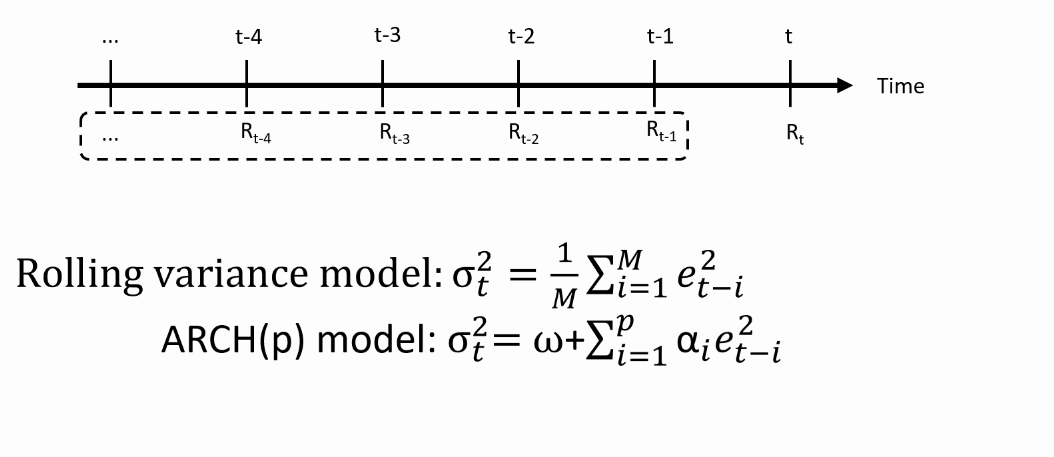
GARCH(1,1) model: Generalized ARCH
- We need an equation that maps the past returns into predictions of the variance
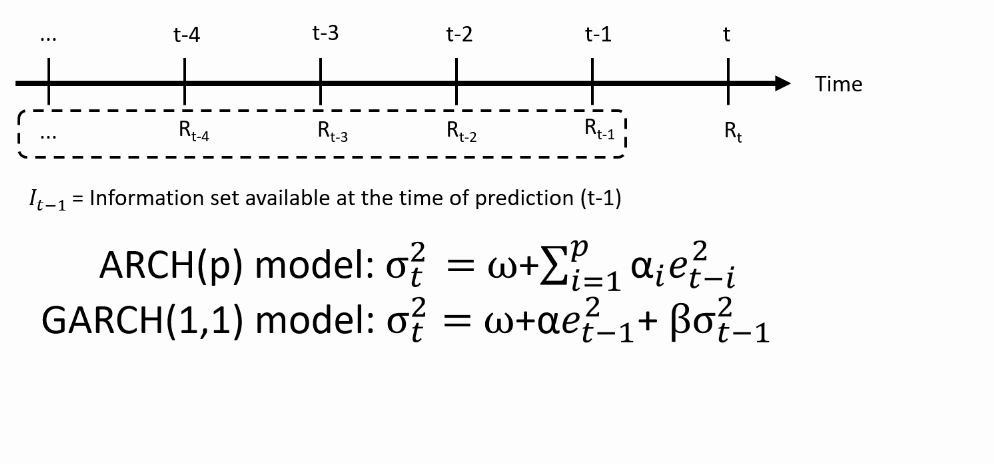
Parameter restrictions
To make the GARCH process realistic, we need that:
$\omega$, $\alpha$ and $\beta$ are $>0$: this ensures that $\sigma^2_t >0$ at all times.
$\alpha + \beta < 1$: this ensures that the predicted variance $\sigma^2_t$ always returns to the long run variance:
- The variance is therefore "mean-reverting"
- The long run variance equals $ \frac{\omega}{1-\alpha-\beta}$
R implementation - Specify the inputs
- Let's familiarize ourselves with the GARCH equations using R code:
$$ \sigma^{2}_{t} = \omega + \alpha e^{2}_{t-1} \beta \sigma^{2}_{t-1} $$
# Set parameter values
alpha <- 0.1
beta <- 0.8
omega <- var(sp500ret) * (1 - alpha - beta)
# Then: var(sp500ret) = omega / (1 - alpha - beta)
# Set series of prediction error
e <- sp500ret - mean(sp500ret) # Constant mean
e2 <- e ^ 2
R implementation - compute predicted variances
# We predict for each observation its variance.
nobs <- length(sp500ret)
predvar <- rep(NA, nobs)
# Initialize the process at the sample variance
predvar[1] <- var(sp500ret)
# Loop starting at 2 because of the lagged predictor
for (t in 2:nobs){
predvar[t] <- omega + alpha * e2[t - 1] + beta * predvar[t-1]
}
R implementation - Plot of GARCH volatilities
# Volatility is sqrt of predicted variance
predvol <- sqrt(predvar)
predvol <- xts(predvol, order.by = time(sp500ret))
# We compare with the unconditional volatility
uncvol <- sqrt(omega / (1 - alpha-beta))
uncvol <- xts(rep(uncvol, nobs), order.by = time(sp500ret))
# Plot
plot(predvol)
lines(uncvol, col = "red", lwd = 2)
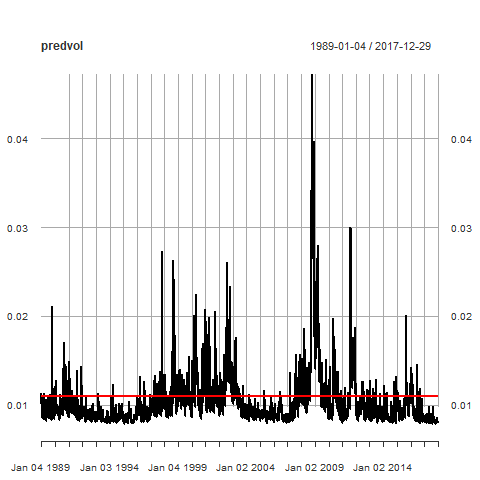
Let's practice!
GARCH Models in R

